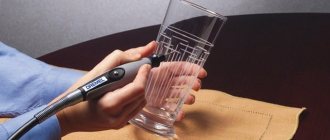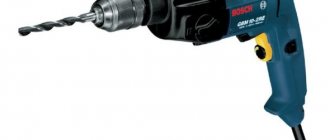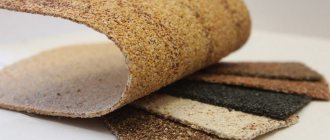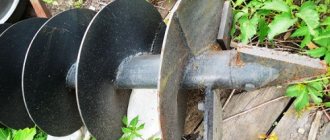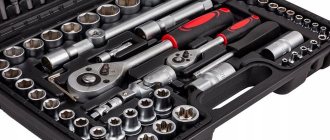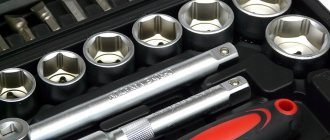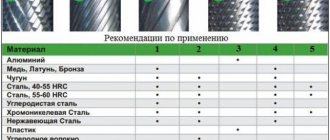Homemade engraver with flexible shaft
In a home workshop, cases periodically arise when, during the manufacture of a part, it becomes necessary to process or modify a surface that cannot be reached with universal equipment. So the part may turn out to be bulky, fragile or not rigid, there is no way to secure the part or the surfaces need to be modified in place.
For this case, a hand-held device with a flexible shaft and mechanical rotation of the cutting tool is used. The device is called differently - an engraver with a flexible shaft, a mini-drill, a drill, etc.
This is a device that looks like a fountain pen, with a rotating, replaceable processing tool connected by a flexible shaft to an external electric drive. A hand engraver, used in conjunction with a flexible shaft, allows you to process hard-to-reach places on any product.
This device is universal because, using a set of various tools, it can be used to mill, grind, polish, engrave and cut material, drill small-diameter holes, and clean surfaces. By equipping the device with an appropriate working attachment, you can successfully use it for working on ferrous and non-ferrous metals, wood, bone, stone, glass, ceramics, plastics and other materials.
Although it is not difficult to purchase such a device on the modern market, many people act differently and make an engraver with their own hands. A homemade device will be inexpensive and will not cause any special problems during manufacture. Despite the simplicity of the design, a homemade engraver allows you to successfully perform the same operations as a serial model engraver.
To make a simple yet easy to use functional engraver, you will need some components. — Flexible shaft (located on the farm or purchased). — Working attachment (research or manufacturing). — Two ball bearings with a diameter of 22 x 8 mm. — Engraver drive. — A set of tools with which processing will be performed. For a homemade working attachment, any tool with a shank diameter from 1 to 3.5 mm is suitable.
However, as a flexible shaft for the engraver, it is possible to use the drive shaft from a drill or the shaft for the speedometer of a car or motorcycle. We use this option for our homemade product.
Due to the flexible shaft, the device has an advantage. There is no unnecessary strain on your hands during operation of the device. This is due to the fact that the shaft head is several times lighter than a power tool with a built-in drive.
Making a working attachment
The threaded part of the housing is designed to connect it to the used flexible speedometer shaft and corresponds to it in thread. In our case, it is M18x1.5 with a length of 10 mm. The 70 mm long body is bored out for two ball bearings with a diameter of 22 x 8 mm. As a drive shaft with a collet clamp, which will be installed in the housing, we use a double-sided hand tool with replaceable collets, which is sometimes used for drilling holes in boards. It's time to mechanize this tool.
For the width of the bearing, to ensure a tight fit, we clean the corrugations from the edges of the tube. We press the bearing on one side. To fix the shaft when clamping a cutting tool in a collet, select a sleeve of suitable dimensions, install it in the middle of the tube and secure it with a pin. We drill a 3.5 mm through hole through the installed bushing, in diameter, to install a stopper when clamping.
On one side (instead of a collet), we screw a piece of copper tube with a diameter of 6 mm into the threaded hole of the tool tube. To do this, at one end we first cut an M6 thread, and carefully compress the other end until the square fits tightly at the output end of the flexible speedometer shaft. As a result, the total length of the drive shaft must match the length of the housing.
We measure the distance from the front end of the tube to the hole for the stopper. We install the assembled shaft into the housing, all the way to the rear wall. Mark the location of the locking hole on the body. We remove the drive shaft and drill a locking hole in the housing. After lubricating the bearings, we assemble the working attachment. Check the alignment of the holes for the stopper. If the bearings are unprotected, cut out and install, on the collet side, a protective washer made of plastic or felt.
After the working nozzle body is completely assembled, the open end of the drive shaft should coincide with the end of the body, and the crimped end of the copper tube should be flush with the threaded end.
Install the collet of the required size.
We attach the flexible shaft to the body.
To secure the cutting tool
We use a drift as a stopper.
Tool
The following tools are used to transform a compact engraving device into a multifunctional processing device: - drills, with the help of which the engraver turns into a mini-drill; — milling cutters of various designs, allowing processing of flat and shaped surfaces, as well as holes, grooves and recesses of various configurations; — disk tools used to perform cutting operations on materials of small thickness; — metal brushes, which are used to clean the treated surfaces from traces of corrosion and other contaminants; — abrasive tools with working heads of round, semicircular, oval and cylindrical shapes, used for grinding and polishing surfaces; — tools with a conical working head for applying inscriptions and patterns to the surface of the workpiece; — tools, the working head of which is made of felt, for performing polishing operations.
Sufficiently high-quality cutters for engraving machines can be made from broken drills, if you give their working part the required configuration using a regular sharpening machine.
Device drive
A drive electric motor, which can be used as any motor powered by an electric current of 220 volts. This could be the motor from a washing machine or other household appliance that you do not use.
An electric motor from a sewing machine is optimal for a homemade engraver, since it is possible to regulate the shaft rotation speed within a fairly wide range. Such motors, as a rule, are capable of shaft rotation speeds of up to 6 thousand rpm, which is quite enough for a household engraver. It is better to work with soft materials at slow speeds, since a high rotation speed will lead to overheating of the tool or melting of the edges of the workpiece. It is recommended to work with metal at medium speed. It is best to process hard natural stone at maximum speed.
Rules for working with an engraver equipped with a flexible shaft
There are a number of rules that should be followed when using a flexible shaft engraver to process various materials.
What to do before you start
Before starting work, select nozzles. All of them should be at hand, so as not to waste time searching for them later. While the device is turned off, it is better to hang it on a special hook, which comes complete with most modern models.
You can prevent the chips formed during processing from sticking to the surface of the tool if you first coat it with a layer of paraffin. It should be kept in mind: if the design of the tool does not provide for forced ventilation, you can work with it for no more than 15–25 minutes, and then you need to give it time to cool naturally. By doing this, you will protect your engraver from premature failure.
When holding the engraver with your hands, you should try not to cover the ventilation slots with your palms
Changing mode
It is necessary to change the speed at which the tool of an engraver equipped with a flexible shaft rotates both when changing the operations being performed and when switching to processing another material. At low speeds, softer materials, such as plastic, are processed. If such materials are processed at high speeds, this can lead to intense heating of the tool and melting of the edges of the workpiece. At medium speeds they process metal products, at high speeds – from hard natural stone.
How to properly care for your engraver
Like any other technical device, an engraver equipped with a flexible drive shaft requires appropriate care. If performed correctly and regularly, such maintenance will not only allow you to use the device at its maximum capacity, but will also significantly extend its trouble-free operation.
During the processing performed with the help of an engraver, its fan blades are actively clogged with dust and small particles of waste material. For this type of fan to work effectively, it must be cleaned regularly using a soft cloth soaked in soapy water. Under no circumstances should you use various solvents and aggressive detergents for these purposes, which can lead to premature damage to the fan blades.
To clean and lubricate the insides, the tool must be disassembled. This infrequent procedure requires certain repair skills
The technical condition of the attachments used with the engraver must also be checked regularly. Worn attachments should be immediately replaced with new ones, as they can cause increased vibration of the device, which will ultimately lead to its premature failure.
It is very important to pay constant attention to the technical condition of the flexible drive shaft of the engraver. The protective shell of the shaft, which is made of polymer materials, should not have serious mechanical damage that could lead to premature failure of the shaft. After each use of the engraver, it is advisable to clean its flexible drive shaft from dust and other contaminants, wipe and, if necessary, lubricate the tips with which it is connected to the electric motor and the working attachment.
After each use of the engraver, it is advisable to clean its flexible drive shaft from dust and other contaminants, wipe and, if necessary, lubricate the tips with which it is connected to the electric motor and the working attachment.
Liquid oil is used to lubricate the internal cable.
During operation, care must be taken to ensure that the flexible shaft does not bend too much. Both during storage and during operation, it is necessary to protect the flexible shaft from mechanical damage.
Why do you need a flexible shaft and where is it used?
Using a flexible shaft is very convenient when you need to tighten or unscrew fasteners in narrow places with difficult access, where you cannot insert a screwdriver in the working position
Flexible shafts are also used to drive hand tools for fine and precise work. Placing a heavy, high-speed electric motor in the tool itself would lead to rapid operator fatigue and loss of precision in operations. An example is a dentist's or engraver's drill.
As a result, the user gets the opportunity to work for a long time with a comfortable, light and small-sized device, and the level of vibration from the electric motor transmitted to the hand is reduced.
Flexible shaft for screwdriver
A feature of the use of a flexible shaft is the limitation of the maximum torque that it is capable of transmitting. If this limit is exceeded, the cable becomes twisted and the shaft fails.
Bracket for receiving drilling machine
The multifunctional bracket will help you convert a standard hand drill (corded, with battery) into a stationary drilling machine. The body is made of heavy-duty aluminum alloy. Massive, allows you to securely install the drill for subsequent drilling. The fasteners are designed in such a way that they are suitable for all modern power tools.
The sole is equipped with a vice, which allows you to fix the workpieces in the desired position and avoid their displacement while drilling holes. The adjustable bracket allows you to set the desired height, taking into account the size of the tool itself. For convenient operation, there is a handle with a rubber pad that smoothly lowers the drill.
Multifunctional bracket for drill and screwdriver
| Price | 2,077.21 - 2,345.32 rub. |
| Rating | 4,6 |
| Reviews | 115 |
| Orders | 188 |
| Delivery to Russia | Free |
Design Features
The main design feature and at the same time the main advantage in application is the ability to bend it anywhere in any direction. This is achieved by using the following components:
The outside of the wire is covered with a corrugated plastic sheath, inside of which there is a grease. It reduces friction, prevents abrasion of the core cable and protects it from moisture and dust.
The design of the flexible drill drive also includes bearings to which the cable is attached. They keep it spinning. At one end the cable is fixed in a socket, at the other it is provided with a mount for a tool.
Extension shaft with collet clamp
Such a drive is intended for light and delicate work; you should not count on using it to unscrew a soured bolt or screw in a 130 mm self-tapping screw at full speed; you must remember that the torque transmitted by the flexible shaft is limited.
Solving the backlash problem
After removing the lock washer on the left, both bearings and the spacer between them instantly fly off:
Photo 5. Dimensional accuracy problem
That is, it immediately turns out that the bearings were not seated tightly on the shaft at all (and if they were seated tightly, there would be no play). It turned out that the diameter of the shaft at the bearing seats is 5.93 mm, and the inner diameter of the bearings is 5.95 mm. Also, the distance between the left (according to Photo 5) side of the shaft and the right side of the slot for the lock washer is equal to 40.64 mm, while the total length of the two bearings + bushings + washer = 2 * 4.98 + 29.93 + 0.60 = 40.49 mm, i.e. shorter than the limit value in the maximum expanded state by 0.15 mm - this gave rise to looseness and play.
It would be possible to add a washer 0.15 mm thick, but it seemed easier to me to replace the plastic spacer sleeve with an internal diameter of 6 mm (and an external diameter of 8 mm) with the same one made of aluminum, but 30.08 mm long, since such aluminum tubes are 1 meter long with different diameters in They are sold in abundance in Leroy Merlin (and I already have a lot of them in reserve for all sorts of crafts/additions; they have come in handy more than once).
Photo 6. Revision
The length of the aluminum bushing is 30.08 mm - now the entire block with the washer fits tightly, eliminating the backlash. But I also used nail polish to increase the thickness of the shaft in the places where the bearings fit (Photo 6). The layer turned out to be too thick, I had to sand it down
Photo 7. Result - the backlash is reset to zero
until translucent. Now the bearings are strung onto the shaft with difficulty, they sit tightly on the shaft and thereby also prevent the shaft from fluttering.
After assembly we have zero play... almost. To the touch, when the cartridge is pulled back and forth along the axis of the shaft, weak impacts are still felt. It turned out that the bearings were playing (the inner ring moves a little through the balls relative to the outer ring); This is not visible visually, but can be felt tactilely. In general, all three bearings are very good - they are all in oil, they rotate smoothly and silently, they look beautiful (however, there is no ABEC-5 inscription).
As a result, now I am suddenly satisfied with this device purchase. I attached to it the same motor with a collet chuck (from Photo 0) with its already existing power supply. The hard long flexible shaft at the back is a little unusual and gets in the way, because before there were soft electrical wires - twist it as you want. But in general, this is the right path to creating a normal and convenient, downright professional, as cheap as possible (taking into account the ability to finish everything you can with your own hands) drill. Also, speed adjustment and switching should be done in the form of a pedal under the foot...
Source
How to make it yourself
Those who like to make tools with their own hands can easily make a flexible drive for a drill on their own.
Important! You won’t be able to make armor braiding yourself; this requires industrial equipment. It is also important to understand that a homemade flexible shaft for a drill will be inferior to a factory one, first of all, in terms of working life. And it’s better to use it occasionally - then it won’t let you down at a crucial moment. For professional work in large volumes, it is better to invest in a purchased extension cord.
As an option, you can take a cable from a car speedometer, as well as a motorcycle gas or clutch control drive as a starting material.
How to do it yourself?
You can make such a product yourself, using a cable as a base. It can be from the clutch, gas or speedometer. You can buy braided wire or take one you already have - it’s almost impossible to make it yourself. It is threaded inside the cable.
One end of the future core is connected to the shank, for which a nut and welding are used. The second end is fitted with a screwdriver cartridge.
When using a homemade flexible shaft, it is important to hold on not to the cartridge, but to the protective shell, that is, the cable
The choice of the finished product should be approached with great responsibility. Work performed using a flexible shaft is complex and time-consuming. A malfunction of one mechanism will disrupt the operation of all others.
When purchasing, you need to pay attention to the manufacturer of the product. A tested and correctly made device will ensure high quality of work performed.
A hasty purchase will result in double expenses. In addition, if the work needs to be done urgently, deadlines will be missed.
In the next video you will find an overview of the flexible shaft for a screwdriver.
Flexible shaft for engraver
The engraver, or drill, develops high speeds - up to 30 thousand rpm. The device is small-sized and fits comfortably in the hand and is used for operations:
Working as an engraver requires high precision of the master's movements. The effort involved is small, compared to, say, tightening self-tapping screws. The torque is also low. Such devices are used by jewelers and artists who create works that are not inferior to the best examples of wood, stone, and embossing carvers. Engraving is performed on materials such as:
Flexible Shaft Engraver
The flexible shaft for the engraver allows the user's manual efforts to be reduced to a minimum, turning many hours of work into an exciting activity.
Job
Externally, a flexible shaft is almost no different from a thick cable, only its surface is often corrugated. Tight hinge joints are installed on the flexible shaft, which remain motionless during operation. You can notice how when you turn on the screwdriver, only the tips begin to move.
The user can hold the adapter in his hand and tighten or unscrew the screws without fear of damaging his palm. Some models have a limit when using self-tapping screws, and it reaches 4*70 mm. If this indicator is, for example, 4 * 100 mm, then after crossing 80 mm into the beam, the flexible shaft simply curls into a loop and cannot complete the task. If you try to continue working, the cable inside simply breaks off near the nozzle. The maximum load is 6 Nm.
Shafts for lawn mowers
Mechanical scythes with electric and gasoline drives use both flexible and rigid shafts.
Powerful brush cutters, capable of cutting tall, hard and dense grass and even small bushes, use all-metal rigid drives. Such devices are designed for long-term operation and have high torque. They are also large in size and weight and are worn on shoulder straps. The working tool is thick, rigid fishing line or powerful steel knives - two, three or four - bladed.
Speedometer flexible shaft
The flexible shaft transmits torque from the car or motorcycle transmission to the magnetic speedometer sensor. If the speedometer needle, when driving at a constant speed, begins to twitch or goes to the extreme position, it means the cable is faulty. You can replace it yourself. The flexible shaft is selected according to the parts catalog for your car brand. It must match in terms of attachment points and length. If the cable is too long or too short, there is a risk of bending it at too small a radius. This leads to extraneous noise (similar to howling), increased wear and premature failure of the unit.
Source
Self-production of a flexible shaft
Those who like to make devices with their own hands can buy a flexible shaft - its braided wire core - in the store. It is impossible to screw on armor yourself without special equipment. The seller will cut the required length from the skein. All that remains is to seal the ends, install the outer casing and fill with lubricant. A shank from a broken drill is suitable for attaching to a drill.
Features of using a flexible shaft for an engraver, drill and screwdriver
A flexible shaft, the main purpose of which is to transmit torque over a considerable distance, is most often used to equip engravers. This type of equipment, which is essentially a miniature grinding machine, is actively used for processing small-sized parts. In particular, the engraver is used as a mini-drill; it is used to perform miniature cutting, selective grinding of small elements of products and a whole list of other works.
The flexible shaft simplifies the use of the engraver, eliminating the need to hold the tool above the work site
The most common areas where flexible shaft engravers are used are the jewelry and electronics industries. Such equipment is actively used by design specialists, employees of car repair stations and workshops involved in the repair of household appliances and electronic equipment.
An electric engraver, on which a flexible drive is installed, is especially relevant in situations where processing must be performed in hard-to-reach areas of the product. Using replaceable attachments, such equipment can be used in all stages of processing, from roughing to finishing.
Flexible engraver shaft with protective springs at the ends that protect the rubber casing from damage
What operations are performed using an engraver with a flexible drive?
Special attachments help turn an engraver with a flexible shaft installed on it into a truly universal device, which include:
To ensure ease of operation with such a device equipped with a flexible drive shaft, you can purchase additional accessories - rubber grips on the handle, a power button lock, etc.
All kinds of holders are very useful, in which, in addition to the shaft and the engraver, you can attach various attachments
Engravers on which a flexible drive shaft is installed also include a drill used in dentistry, a manicure machine, equipment for processing natural stone and applying inscriptions and drawings to the surface of products made from it.
You can also use a flexible shaft for a drill or purchase a flexible shaft for a screwdriver. With this improvement to conventional power tools, a screwdriver attachment or drill can be successfully used to perform work even in the most difficult to reach places.
Drill attachment
The flexible shaft for the drill is made of wire to transmit rotation with several layers of braid. It has an increased safety margin, since it is designed for high speeds up to 1500 rpm. The length of the nozzles offered in stores ranges from 950–1250 mm. Other sizes are possible, but are less common or made to order.
Before starting work, unscrew the mounting sleeve on the drill and insert the end of the shaft into the hole for the tool. The locking ring is clamped, as when installing a drill, directly into the tool chuck. Now you need to fix the drill so that it does not move due to the vibration of the engine and does not fall.
In a store that sells a flexible shaft for a drill, you can also purchase a portable stand for hanging the tool. This simple device can be easily assembled with your own hands. When working in a permanent place, a clamp on a table or wall is sufficient. The flexible shaft cannot be used with high speed or impact drills. A tool with adjustable speed and reverse is best suited for performing work at a distance from the body.
How does the engraver work and how does it work?
The engraver, which allows you to process parts with high precision and productivity, works on the principle of a conventional drill, and in appearance it is very similar to a large automatic pen. The main structural elements of such a device are:
Rotation from the engine is transmitted to the axis of the flexible shaft, the reverse side of which is connected to the working nozzle. The mounting locations of the nozzles are unified, so there are no problems with choosing the required tool and replacing it.
Equipment selection criteria
When choosing an engraver, you should focus on a number of characteristics.
Based on the power level of the device, on which its performance directly depends, one can indirectly judge the operating life of the drive motor. The power of the engraver, which for serial models can be in the range of 35–300 W, should be selected based on the tasks for which it is planned to use such equipment. In addition, you need to consider how long it will work between turning on and off. The duration of the operating process depends on the hardness of the material from which the product being processed is made. The longer the engraver is used at one time, the more power it should have.
Low-power compact engraver is convenient for simple work without a flexible drive
The speed at which the motor shaft and the flexible drive shaft attached to it rotate is also selected depending on the hardness of the materials to be processed by the engraver. Models offered on the modern market can provide tool rotation speeds in the range of 10–35 thousand rpm. Low-speed models can be purchased if they will be used primarily for finishing grinding and polishing. When performing such operations, a small load is placed on the tool, so the engraver itself does not overheat, and therefore does not fail.
If you need a more universal device with a flexible shaft, it is better to give preference to engravers that provide the ability to adjust the rotation speed of the tool.
The speed controller significantly increases the functionality of the engraver
The weight and dimensions of the engraver influence how convenient and easy it will be to manipulate such a device during processing with its help. Engravers that have significant dimensions and weight are much more difficult to work with, but such devices, as a rule, have higher power and productivity. The weight of an engraver with a flexible drive shaft can be in the range of 0.5–8.5 kg. When choosing such a device, first of all take into account the required power and functionality, and only then pay attention to the weight and dimensions.
Since an engraver works by constantly holding such a device in his hands, its ergonomics, which characterizes the ease of working with the equipment, is an important factor when choosing. When assessing the ergonomics of a device, you should pay attention not only to its design, but also to the build quality, manufacturing materials, button placement and comfortable handle design.
Before purchasing a tool, you should hold the engraver in your hands and try out the buttons and latches.
These parameters are not indicated in the equipment passport. It is advisable to pay attention to them if the engraver will be used quite often. To evaluate how much noise and vibration the device makes during operation, you just need to turn it on and evaluate these parameters. As a rule, medium-power engravers make more noise, and in more high-speed equipment this problem is provided for by the manufacturers and is eliminated by including special elements in the design. You can only estimate how hot an engraver equipped with a flexible drive shaft gets during operation.
Flexible shaft design
A flexible shaft for an engraver or any other equipment whose torsional rigidity has higher requirements than bending rigidity, as mentioned above, is used to transmit torque to elements that change their spatial position during operation.
The main part of the flexible shaft, which is responsible for the main function of such a device, can be a wire rod or a special cable. This element is made of materials with high torsional rigidity. Additional layers of twisted wire are wound onto the main core of the flexible wire shaft to give it higher rigidity. To ensure safe use of the flexible drive shaft, as well as to protect its surface from damage and retain lubricant on it, this device is placed in a flexible protective shell, which is stationary in relation to the rotating core.
This flexible shaft is equipped with a bit holder on one side and a union nut on the other to secure it to the engraver.
Depending on the design, flexible shafts can be of right or left rotation, which should be taken into account when selecting and using them. Not only the design of flexible shafts can be different, but also their length, sometimes reaching five meters.
The design of the fastener for such a device also depends on where the flexible shaft is installed - on a drill, engraver or screwdriver. Thus, fastening nuts or other types of fastening fittings can be placed at the ends of the shaft.
The tip of this shaft can be removed for cleaning and lubrication, for which there is a hole on the side
Various mechanisms and equipment are driven by flexible shafts of different designs. In addition to engravers, drills and screwdrivers, internal vibrators, brush cutters and many other types of technical devices are equipped with such shafts. The simplest and most familiar option for using a flexible shaft is to clear sewer pipes from internal blockages.
Mechanical car speedometers are also driven by a flexible shaft. Making a flexible shaft with your own hands is, of course, possible, but given the loads under which such a device operates, it is better not to experiment and purchase serial products from trusted manufacturers. You can only be puzzled by the issue of making a flexible shaft yourself if it will be used to drive low-power equipment operating at low speeds.
Design
This adapter has special requirements regarding bending rigidity. In the center of the structure there is a special cable or wire rod. They are made from materials that can withstand torsional loads. It is based on a metal core onto which the wire is wound. There can be several layers.
The safety of the tool is ensured by a rubber shell, which also provides additional protection for the core from damage and retains lubricant inside. In relation to the rotating rod, this shell remains motionless. On one side of the adapter there is a cartridge through which you can change attachments. On the other side there is a union nut or fastening fittings, through which fixation occurs with a screwdriver.

